- Heddels
- Posts
- April 17 - Wearing Denim Profile
April 17 - Wearing Denim Profile
“Wearing Denim” and Repairing Denim Since 2019
Our profile on Dylan Martin, a new face but an old hand in denim repair and his studio "Wearing Denim".
David Shuck

We’re upfront about our love of denim and the many things it’s good at. It’s good at keeping you warm, it’s good at wearing hard, and it’s good at falling apart. Luckily, it’s also good at being put back together. And if you’re not as skilled, there are people like Dylan Martin ready to help.
Dylan has had most jobs you can think of in the consumer denim business: selling it at a big corporate chain (the Levi’s store in Portland in 2012); selling it at a higher end boutique (the Bend, Oregon location of menswear store Revolvr); doing repairs and alterations on it at a local tailor; and, since 2019, repairing it full time under the moniker “Wearing Denim“.
Dylan knows the inside and out of a pair of jeans, knowledge he can put to use in your next repair, in person or through the mail at his studio in Bend.
The Long Road to Repair
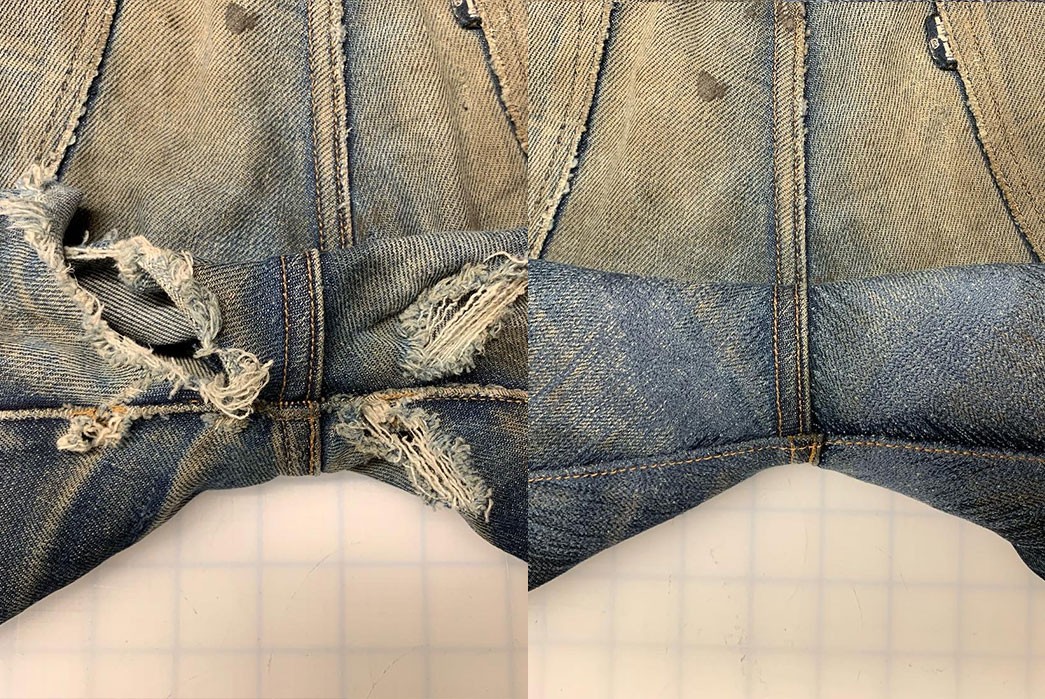
A recent Wearing Denim darn on a pair of Levi’s Made & Crafted jeans.
Like many sewing machine tinkerers in our community, Dylan got into the hard and personal way of self-teaching. He found the gospel that is this site (Rawr Denim at the time) and after learning the error of long circulated denim myths perpetuated by co-workers at his Levi’s store, he soaked up as much info as he could find, including logging time behind a bobbin.
Much of this was narrowing pant legs to make skinny jeans (remember, this was the mid 2010s), but Dylan took the next leap when his wife gifted him sewing lessons from a local tailor. Said tailor recognized his skills and dedication at the craft and hired him to do hems and simple repairs, then other alterations and more complex repairs.
And then he discovered Rain Delisle.
For those unfamiliar, Rain pioneered a kind of denim repair beyond the typical standard darn or patch. Under her skilled hands, jeans just kind of heal back into themselves through a mix of color matching and voodoo magic. Dylan was blown away by what he saw and experimented with trying to recreate these seemingly invisible repairs.
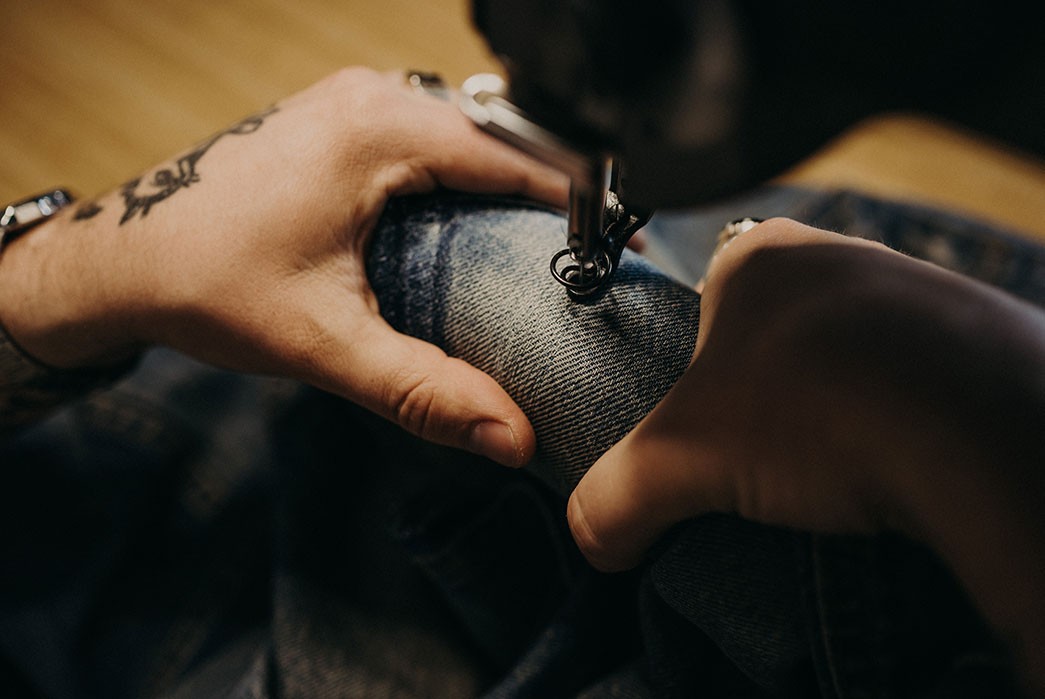
Dylan at work on his Consew console.
He happened upon a Consew 207 darning machine on Craigslist at a rock bottom price. The Consew was a Japanese made clone of the rarefied Singer 47w70 darning machine, meaning the sewing machine doesn’t pull the fabric through it and the operator can vary stitch length and direction as needed to make near seamless repairs. It also has a cylinder-shaped bed so it can maneuver into tight corners much more easily than a flatbed.
Dylan’s was bought at an auction at the Oregon State Hospital (where One Flew Over The Cuckoo’s Nest was filmed) by the previous owner where it apparently repaired uniforms and such.
Dylan learned the machine backwards and forwards and it was paying off with some impressive repairs of his own. He opened his dedicated repair business as Wearing Denim in 2019.
The Philosophy of Wearing Denim
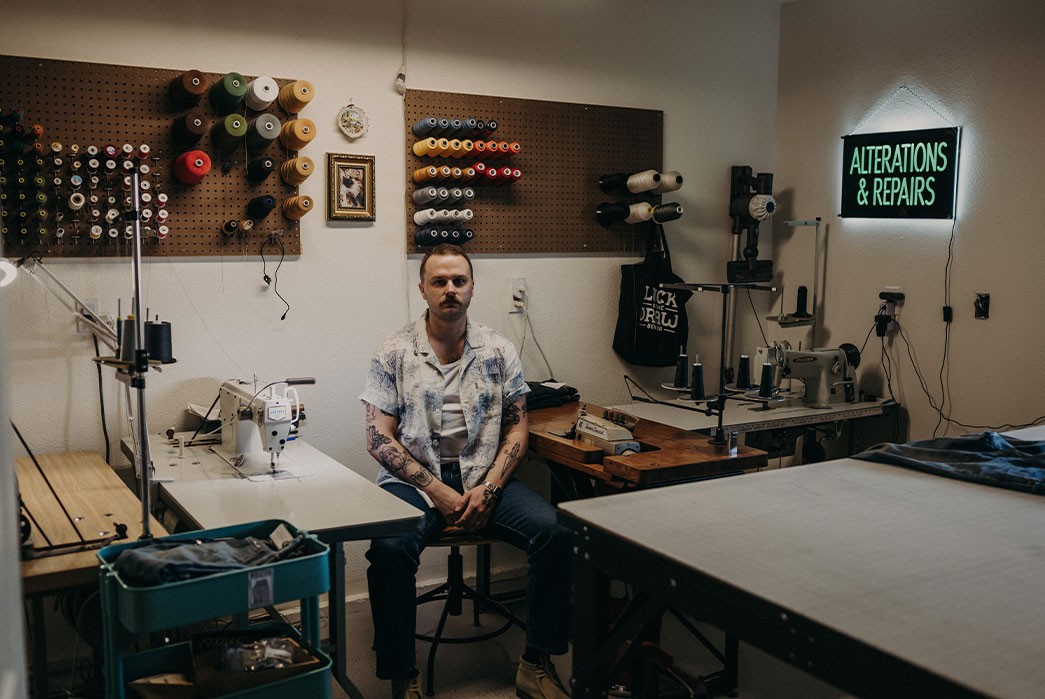
Dylan says it best in his own words, “Anything worth owning in the first place is worth repairing. When I love something like a favorite pair of jeans I want them to last forever.” And as a bonus, “Prolonging the life of a garment is always going to be better for the environment than making a new garment.”
If that’s not the core of all we stand for at Heddels, I don’t know what is. But beyond that philosophical alignment, why go to Dylan instead of your local tailor?
Probably the biggest difference is I don’t sew over seams. Denim repair at many local alterations shops seem to be a quick service they offer usually for really cheap. There isn’t much thought put into it, just throw a denim patch behind the hole and close it up, if there are seams in the way go right over them.
Using heavy denim patches leads quickly to new holes around the repaired area and sewing over seams ruins your ability to do future repairs without just adding bulky patch over bulky patch. I’ll take apart the garment wherever necessary to “properly” repair the worn area, then sew it back together trying to keep it looking like how it came from the factory.
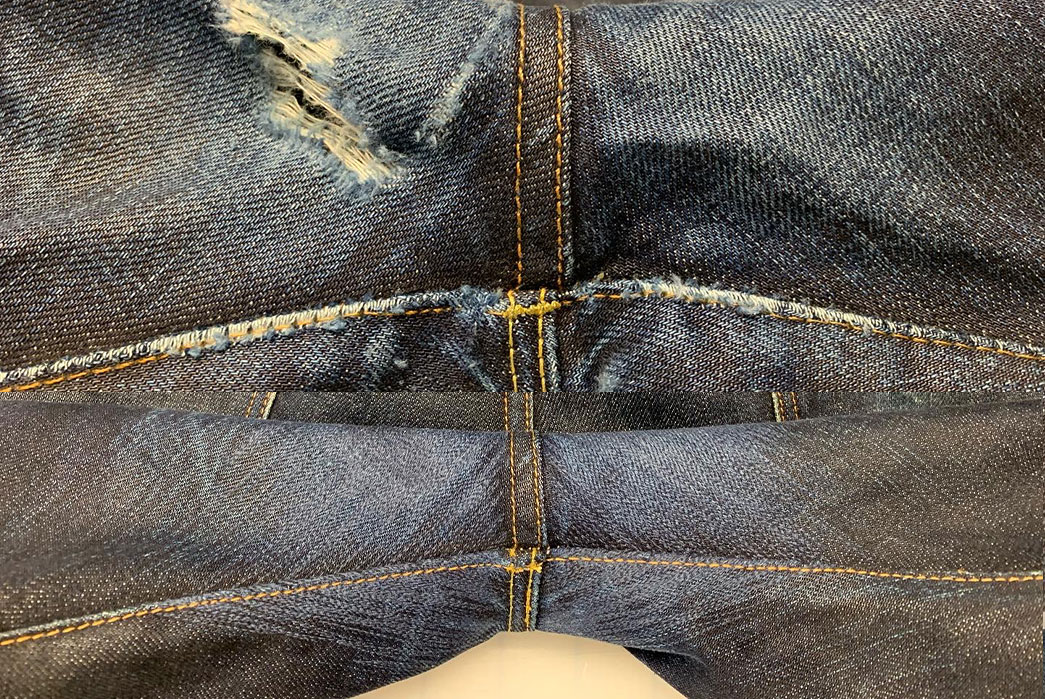
Before and after on a pair of RRL jeans where all the seams were taken out, repaired, and put back together.
As for materials, Dylan uses Gütermann thread (that’s the expensive stuff for all you non-sewers) and a lightweight cotton backing to get the smoothest and least obstructive repairs.
The Wearing Denim Experience
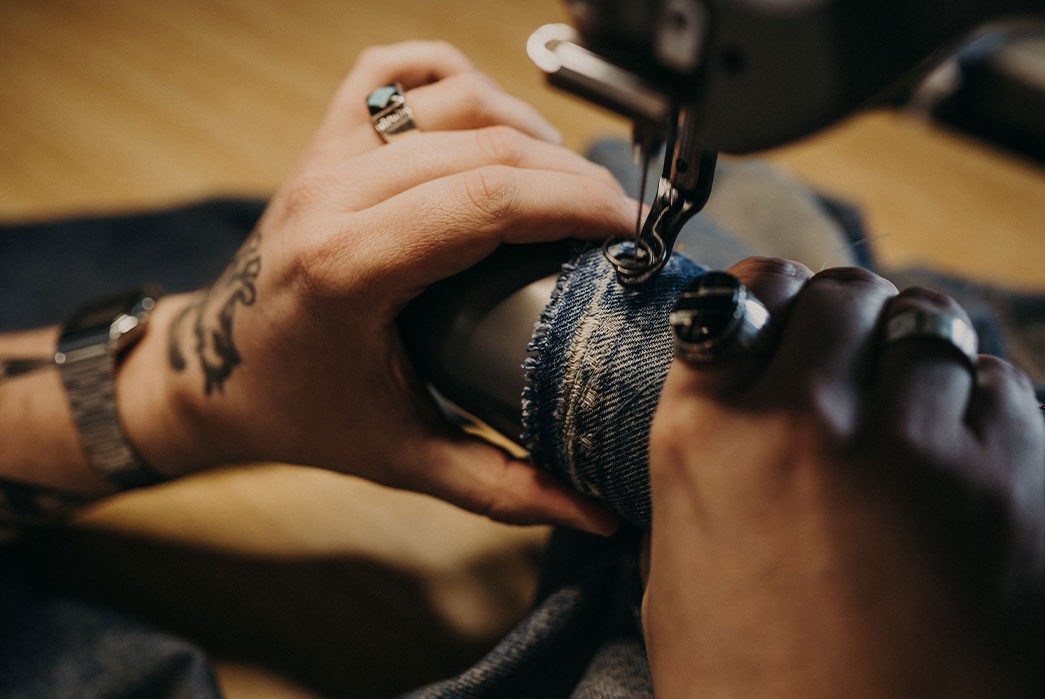
A deconstructed panel being repaired separately.
What can Wearing Denim do for you? Pretty much any kind of repair through the mail:
Crotch blowouts
Knee repairs
Cuff repairs
Back pockets and pocket bags
Zipper and button replacement
Anywhere else you can think of on the jean
And alterations for those of you lucky enough to live in the Bend area because Dylan still needs to pin it himself:
Tapers
Waist take-ins
Stride take-ins
Or anything else that needs adjusting
Once your jeans are received, a two-week clock starts ticking and Dylan gets to work:
I take a look at the worn area and figure out how I’m going to approach the repair. After that I usually have to take apart a few seams, for crotch repairs it’s the inseam and often part of the back seam, on occasion the fly. Once the jeans are torn apart I prep them for the repair by ironing on the light backing over the tears and worn areas.
Before starting to sew I have to find the best thread color match possible. Depending on the colors of the warp and weft or the wear of the denim I will use a different color for my top thread than my bobbins. If it’s really monochromatic denim I will use the same color for both threads.
After I’m done darning that’s when I remember I forgot to take a before photo of the hole, so I proceed to stitch the jeans back together.
Are You Ready to Wear Denim?
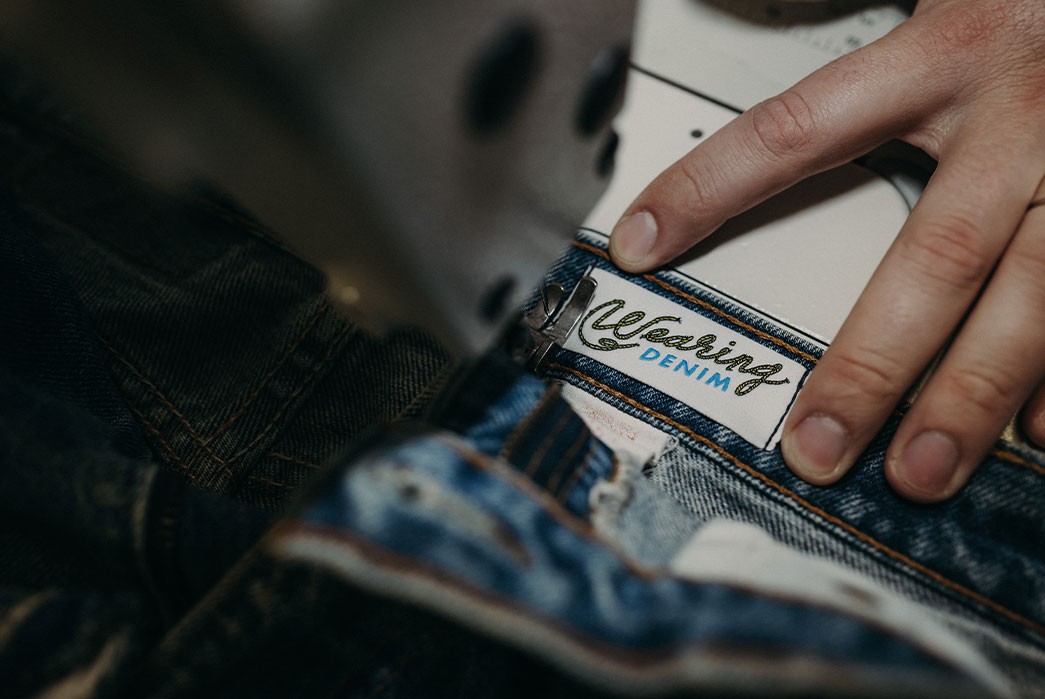
Wearing Denim woven labels can be added upon request to all repairs.
If your jeans need the touch of Dylan’s loving Consew, you can get in touch with him via the Wearing Denim website. The pricing is flexible as all repairs are unique with crotch repairs at $60+ and leg repairs starting at $30+ (you can see the full pricing list here). As mentioned, Dylan turns most repairs around within two weeks of receiving.
As long as it’s worth loving, it’s worth repairing. He’s worked on everything from bargain rack jeans from Target to the heaviest weight Iron Hearts and Dylan is ready for your jeans when they need it.
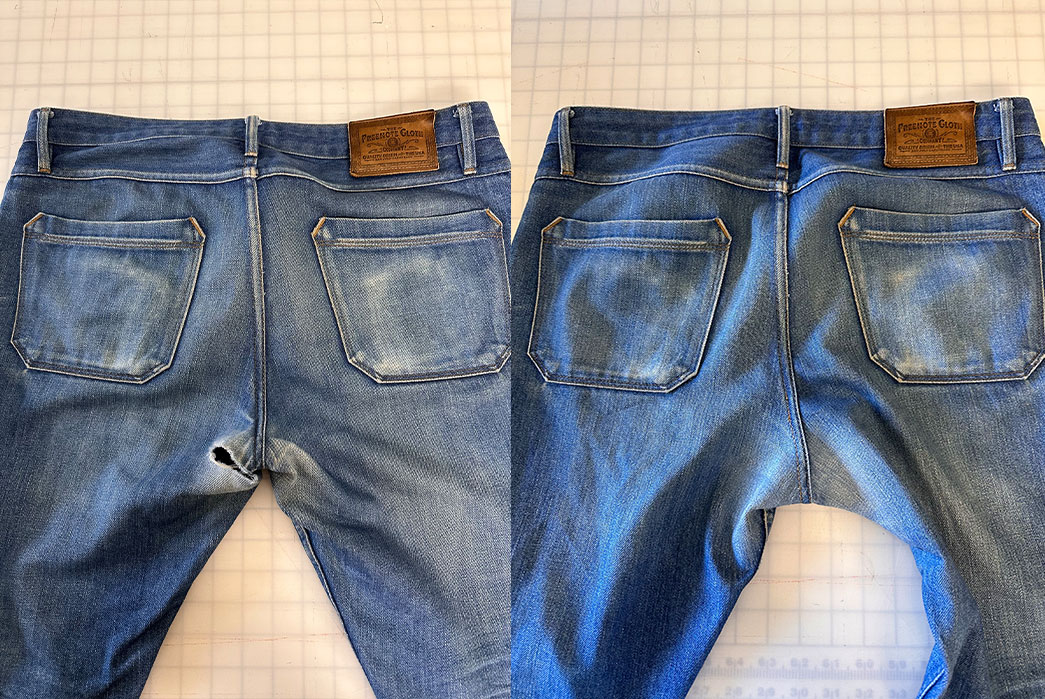
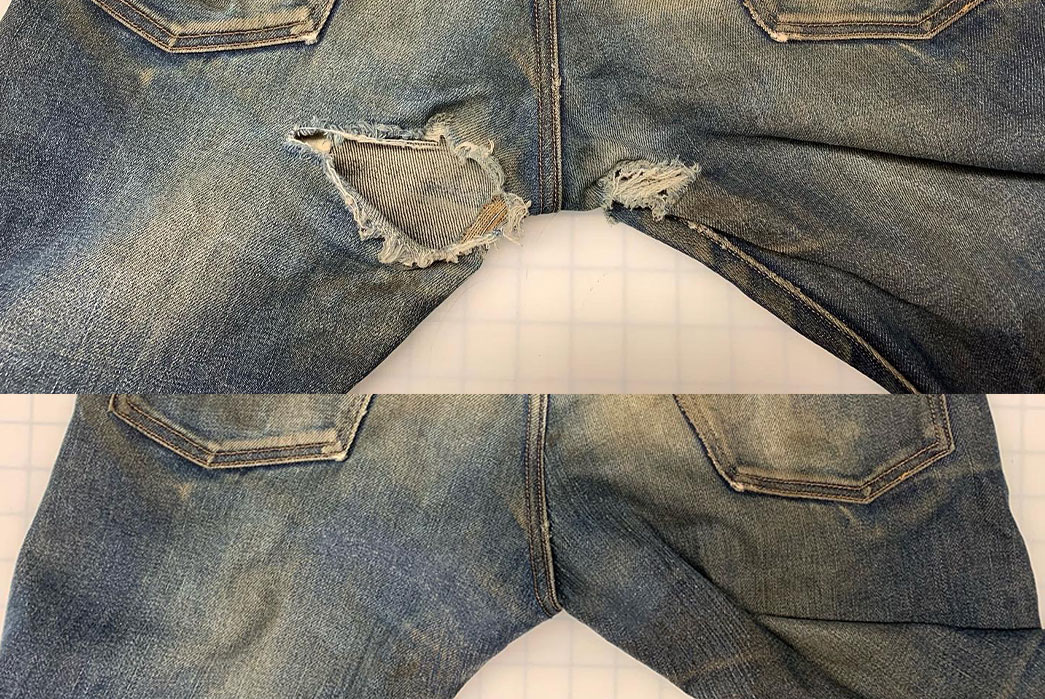
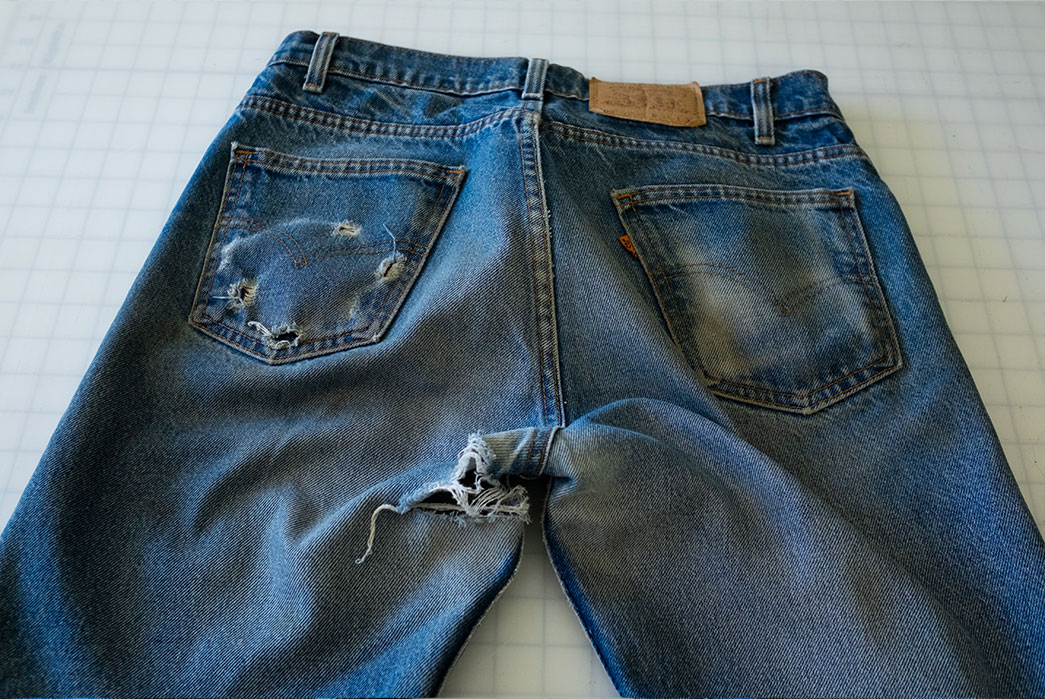
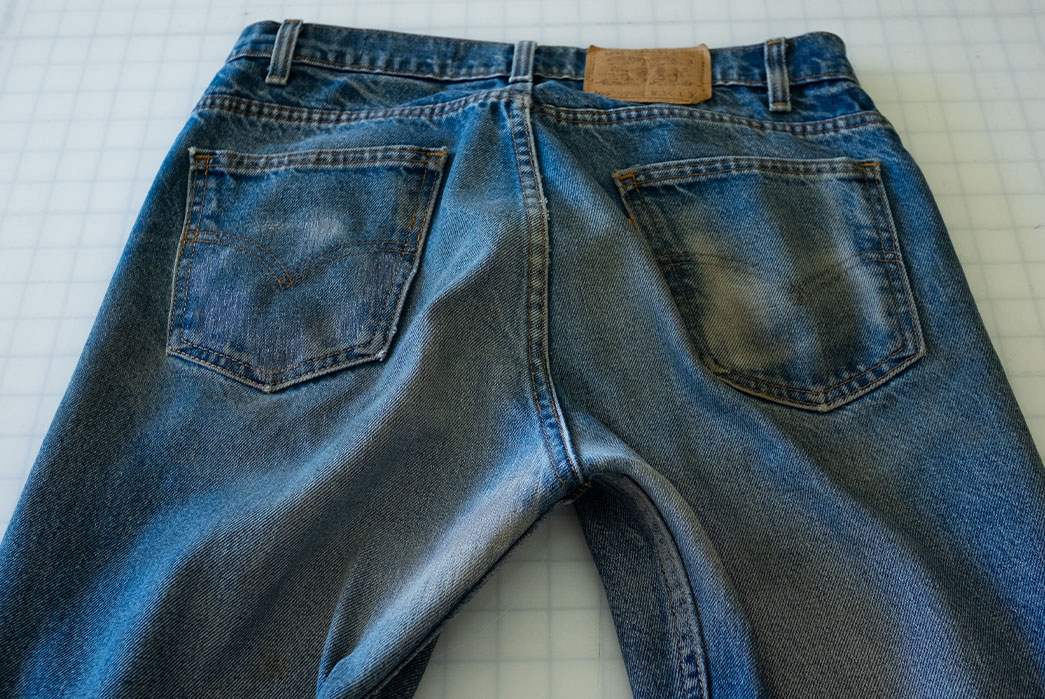
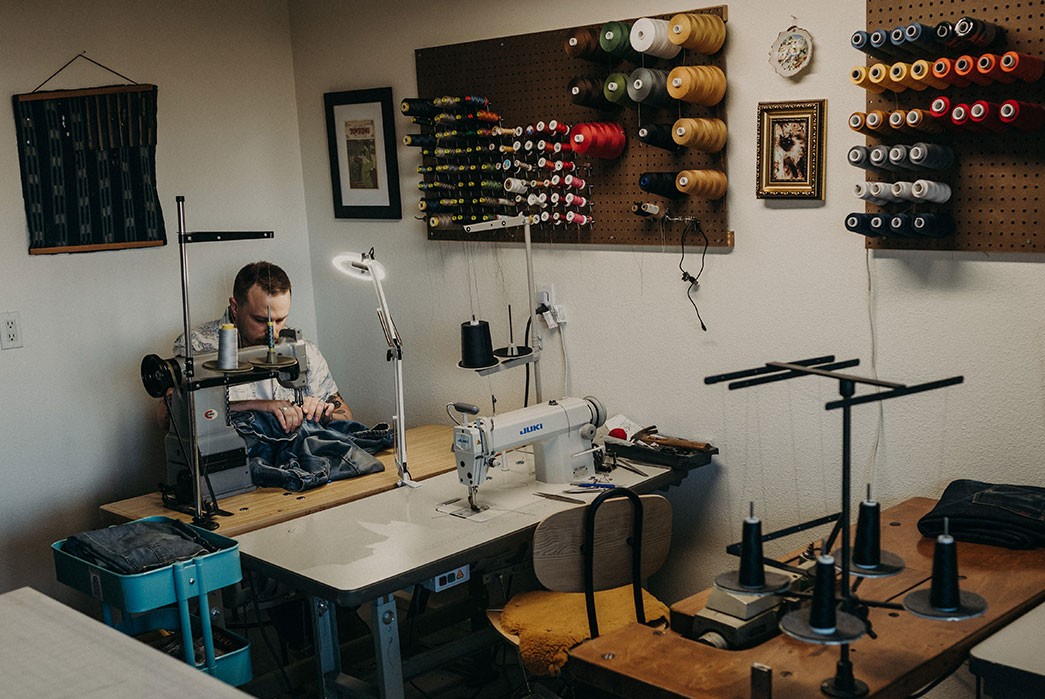
Visit the Wearing Denim website and follow Instagram to keep up with the latest repair pics.
Like this? Read these:
What did you think of today's newsletter? |

